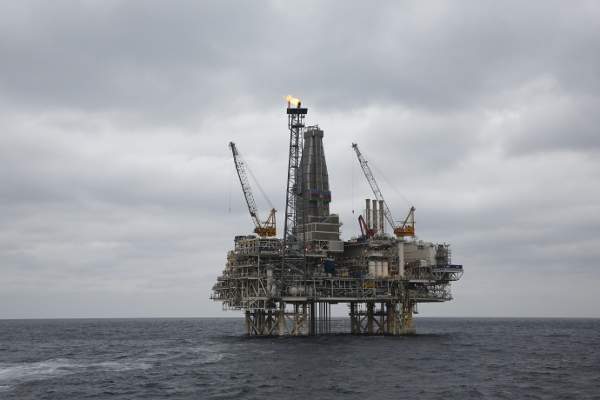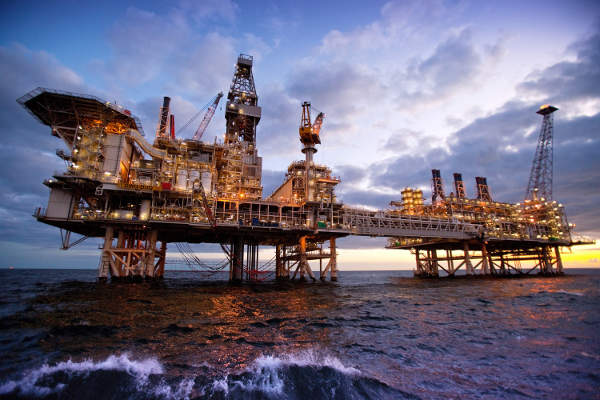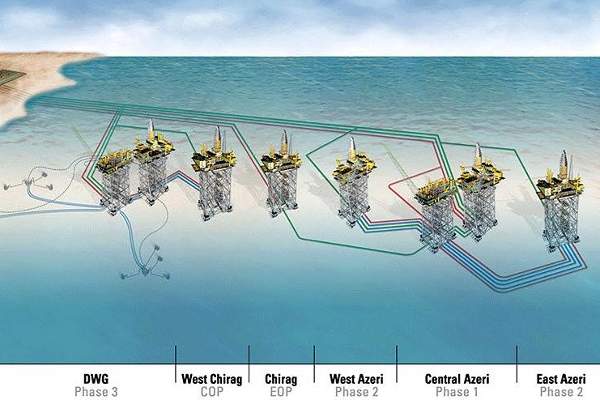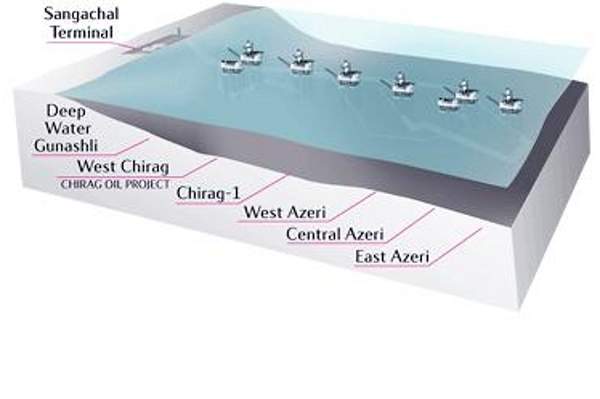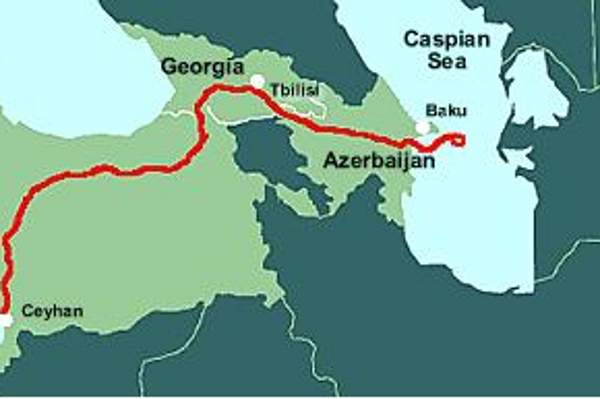
1980s
Azeri-Chirag-Gunashli (ACG) Oilfield was discovered in the early 1980s. State Oil Company of the Azerbaijan Republic (SOCAR) started the development in shallow waters of the Gunashli field, implementing several platforms and entering production in 1985.
1990s
The ACG production sharing agreement (PSA), which entails the 30-year joint-development of the field, was signed between SOCAR and certain international oil companies in September 1994. The PSA was approved by the Azerbaijan Parliament (Milli Majlis) in December of the same year.
The Azerbaijan International Operating Company (AIOC), a consortium of ten oil companies, was formed in February 1995 and the approvals for the Early Oil Project (EOP) were granted the same year, including the Northern Route export pipeline passing through Sangachal to the Russian Black Sea port of Novorossiysk and the Western Route export pipeline passing through Sangachal to the Georgian port of Supsa on the Black Sea
Production from the EOP started in November 1997, through the Chirag-1 offshore production, drilling and quarters (PDQ) platform, with daily oil production averaging approximately 130,000 barrels. Chirag-1 currently includes 18 operating wells (13 oil producers and five water injectors).
AIOC appointed BP to operate the field on its behalf in July 1999.
2001
Devon Energy acquired an additional 0.8% interest in ACG from Ramco Energy in February for $58.3m, which increased its interest in ACG from 4.85% to 5.65%.
The Azeri Project Phase 1 Central Azeri production project of the ACG Full Field Development was approved in August 2001.
2002
Phase 2 of the Full Field Development was approved for development in September 2002, which involved the development of West Azeri and East Azeri, including the Baku-Tbilisi-Ceyhan (BTC) pipeline project, the main export pipeline for the ACG field.
Chirag-1 platform produced at an average capacity of 110,000bpd in 2002.
2003
Construction of the BTC pipeline on the Georgian section to Turkey started in May.
2004
A series of loans amounting to $120m for executing Phase 1 of ACG was granted by the International Finance Corporation (IFC) and the European Bank for Reconstruction and Development (EBRD) in February.
Phase 3 of the Full Field Development, which included the development of the Deepwater Gunashli (DWG) complex, was approved in September 2004.
2005
Production from Phase 1 (Central Azeri project) of ACG Full Field Development started in February, whereas Phase 2 (West Azeri project) started production in December. Phase 1 included the installation of a 400,000bpd production unit and a compression / water injection platform in Central Azeri.
The Azerbaijan and Georgian sections of the BTC pipeline were commissioned in May and October respectively.
2006
Mars B Project involved the installation of a new host platform named Olympus at the Mars oilfield in the Gulf of Mexico.
The 1,768km-long BTC pipeline was fully commissioned in July with the opening of the Turkish section.
Production from East Azeri platform, which formed part of the Phase 2 development, started in October.
2007
The construction of the DWG platform topsides was completed in September.
2008
Production from Phase 3 (DWG) of the ACG Full Field Development started in April. The DWG complex, installed at a water depth of 175m, comprises a drilling, utilities and quarters (DUQ) platform, as well as a process, gas compression, water injection and utilities (PCWU) platform.
Operation of the Central Azeri platform was suspended from September to December 2008, following a gas release from its subsurface. The compressor and water injection platform (CWP) of Central Azeri, including the West Azeri platform, were also temporarily suspended in October due to the accident.
2009
The expansion of the Sangachal onshore terminal of the ACG field, which started in 2002, was completed in March 2009 and the front end engineering and design (FEED) and procurement support service contracts for the Chirag Oil Project (COP) were awarded to KBR in the same month.
2010
The $6bn COP project was sanctioned, with an aim to extract additional 360 million barrels of oil from the ACG field. The COP project primarily involved the installation of the West Chirag platform.
The remedial works following the subsurface gas release in 2008 were also completed in 2010.
BP acquired 3.29% of Devon’s interest in the field for a sum of $1.1bn, increasing its interest to 37.43%. Chevron, Inpex and Itochu also acquired 0.99%, 0.96% and 0.38% respectively from Devon.
The field produced at an average of 823,100bpd in 2008 and BTC completed the export of one billion barrels of crude oil to world markets the same year.
2011
In July, BP sold half of the 3.29% interest it acquired from Devon Energy in 2010 to Azerbaijan (ACG), an affiliate of SOCAR, for $485m.
2012
Hess Corporation announced its plan to sell the 2.72% interest in the field to ONGC Videsh in September.
The field achieved its two billionth barrel production in 2012. Construction of the West Chirag platform jacket was completed in October.
2013
Hess Corporation’s sale of its interest in ACG was closed in April. The current partners in the field include BP (operator, 35.78%), SOCAR (11.65%), Chevron (11.27%), INPEX Corporation (10.96%), Statoil (8.56%), Exxon Mobil (8.0%), TPAO (6.75%), Itochu Oil Exploration (4.30%) and ONGC Videsh (2.7%).
The West Chirag platform jacket was installed in April, while its topsides were successfully installed in September.
2014
Production from the COP project started in January. Around $4bn was spent on the project since its inception in 2010, while the remaining $2bn will be spent in maintaining the platform over its lifetime.
The West Chirag platform, the biggest in the Caspian Sea, is located between the existing Chirag and deep-water Gunashli platforms, at a depth of 170m. The eighth platform at ACG was fabricated exclusively within the country. It is designed for an oil production capacity of 183,000bpd and a gas export capacity of 285mscfd.
The current production capacity of the field is approximately 600,000bpd. Cumulative production stood at 2.5 billion barrels of oil and recoverable reserves are estimated at 5.4 billion barrels of oil. Approximately $29m has been invested on the project to date.
A total of 81 production wells and 36 injection wells have been drilled at the field as of mid-2014.

